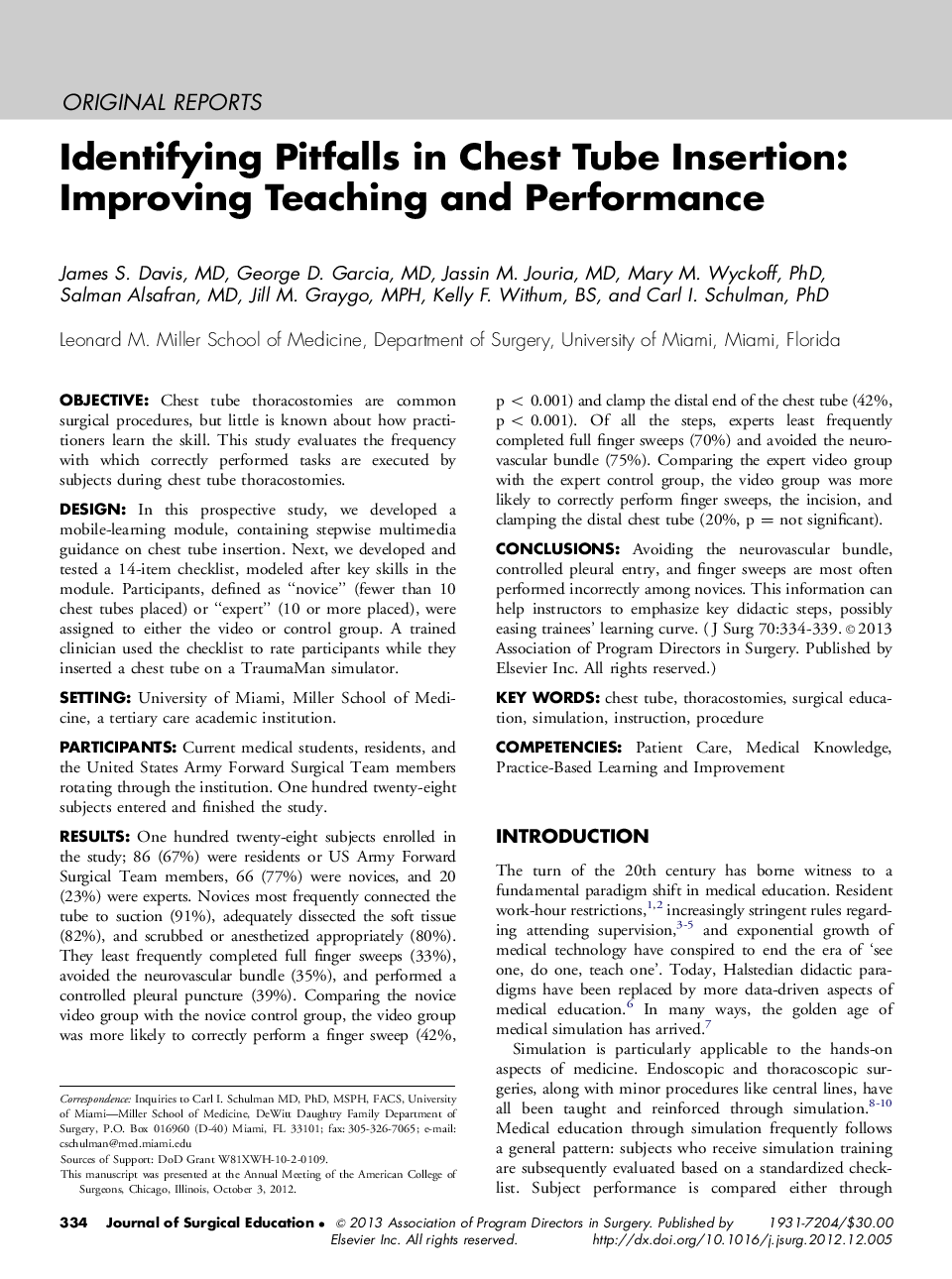| کد مقاله | کد نشریه | سال انتشار | مقاله انگلیسی | نسخه تمام متن |
|---|---|---|---|---|
| 4298046 | 1288339 | 2013 | 6 صفحه PDF | دانلود رایگان |

ObjectiveChest tube thoracostomies are common surgical procedures, but little is known about how practitioners learn the skill. This study evaluates the frequency with which correctly performed tasks are executed by subjects during chest tube thoracostomies.DesignIn this prospective study, we developed a mobile-learning module, containing stepwise multimedia guidance on chest tube insertion. Next, we developed and tested a 14-item checklist, modeled after key skills in the module. Participants, defined as “novice” (fewer than 10 chest tubes placed) or “expert” (10 or more placed), were assigned to either the video or control group. A trained clinician used the checklist to rate participants while they inserted a chest tube on a TraumaMan simulator.SettingUniversity of Miami, Miller School of Medicine, a tertiary care academic institution.ParticipantsCurrent medical students, residents, and the United States Army Forward Surgical Team members rotating through the institution. One hundred twenty-eight subjects entered and finished the study.ResultsOne hundred twenty-eight subjects enrolled in the study; 86 (67%) were residents or US Army Forward Surgical Team members, 66 (77%) were novices, and 20 (23%) were experts. Novices most frequently connected the tube to suction (91%), adequately dissected the soft tissue (82%), and scrubbed or anesthetized appropriately (80%). They least frequently completed full finger sweeps (33%), avoided the neurovascular bundle (35%), and performed a controlled pleural puncture (39%). Comparing the novice video group with the novice control group, the video group was more likely to correctly perform a finger sweep (42%, p<0.001) and clamp the distal end of the chest tube (42%, p<0.001). Of all the steps, experts least frequently completed full finger sweeps (70%) and avoided the neurovascular bundle (75%). Comparing the expert video group with the expert control group, the video group was more likely to correctly perform finger sweeps, the incision, and clamping the distal chest tube (20%, p = not significant).ConclusionsAvoiding the neurovascular bundle, controlled pleural entry, and finger sweeps are most often performed incorrectly among novices. This information can help instructors to emphasize key didactic steps, possibly easing trainees' learning curve.
Journal: Journal of Surgical Education - Volume 70, Issue 3, May–June 2013, Pages 334–339